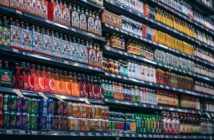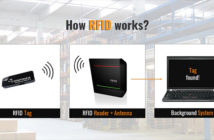The use of radio frequency identification i.e. RFID has become established in the last few decades. RFID technology is used for identifying products and assets, and capturing data. Capitalizing RFID has increased swiftly due technology development and IoT (Internet of Things). This generates extensive opportunities for new RFID applications. RFID delivers better knowledge for business development.
What are the main advantages achieved with RFID?
1. Processes become more efficient through automatization
With help of RFID, data is captured accurately and automatically from processes without extra manual work. Digital data capture reduces slow manual paper work. Automatically captured information is also more accurate and error-free. Automatized processes require less resources and become quicker. Variety of reports from process phases are gained easily, as well as forwarding data to other information systems. RFID helps to make processes visible throughout the organization. In a long run, processes become more intelligent, which enhances operations and brings cost savings. Tyre factory Tigar used RFID to develop their whole production process traceable. Read case Tigar>
2. Logistics and supply chain will speed up
Visibility and product traceability in different phases of logistics and warehouse management, can be enhanced with RFID technology. With RFID-systems, even hundreds of items can be identified easily and quickly in e.g. receiving, packaging and dispatching of products. Automatic identification decreases errors compared to manual handling, hence it is easy to compare the content of the delivery to the original order. Monitoring and tracking of deliveries are improved. Warehouse management with RFID helps increasing efficiency by enhancing product circulation, minimizing stocks and investments. Improved efficiency saves costs. Lindström Group speeded up their supply chain remarkably through RFID. Read case Lindström>
3. Assets and products are easily tracked and inventory automated
Items and company assets are nowadays widely connected to network (IoT), which can be accomplished with RFID technology. Easy tracking of company assets and equipment brings cost savings, makes carrying maintenance services easier and decreases product losses. The location and condition of assets can be traced with an application. Traceability can also create new business, such as product rental. Automatic identification of products makes inventory quicker and enables automatic re-ordering of products. Finavia utilizes RFID solution when tracking luggage trolleys at the Helsinki-Vantaa airport. Read case Finavia>
4. Material availability is ensured
RFID technology is used for ensuring material availability in production according to LEAN methodology. The aim is to ensure just the right amount of material at the right time. RFID helps optimizing the material usage in production and avoiding overproduction of materials, which minimizes cash invested in stock. The data of material status can be captured through RFID and forwarded to company’s information systems. This enables monitoring and planning the production process throughout the organization. Material tracking can be managed with tailored RFID solutions or with eKANBAN Solution by Toptunniste>
5. Access permissions and user identification are managed easily
In addition to item and asset identification, RFID can also be used for identifying users, e.g. managing access permissions. Company employees can have an access e.g. to use or pay for property, assets and equipment with NFC technology (NFC uses radio frequency identification), which tracks time or situation of use. Examples of this are access to equipment storages and parking spaces. Würth utilizes intelligent WüCON Compact storage solution with RFID to identify users and stock balances. Read case Würth>
6. Real-time monitoring and visibility speed up operations
Tracking objects and processes with RFID enables transmitting captured information in real-time. If any problems occur, monitoring situations real-time enables reacting them immediately. RFID helps to speed up processes and offers a way to deliver client-specific information about deliveries quickly. Quick reaction to situations usually saves also costs. Molok capitalizes RFID to manage customer service and real-time maintenance services. Read case Molok>
7. Work becomes more intelligent
Automated processes and reduced manual work phases enable relocating resources to more productive work. Employees’ time is not used in manual registrations, checking and monitoring, hence this work is done more accurately and without manual errors with RFID. More capacity will be available with the same number of employees and this is usually seen as a better customer service. CERTEGO utilizes NFC (RFID) technology in managing maintenance services for safety solutions. Read case CERTEGO>
8. Capturing critical data from scattered events opens new development potential
RFID technology can be used for identifying and capturing business critical data in processes and transmitting data to other information systems. With better knowledge, workflows can be improved, decision making is supported and new opportunities are opened for developing operations and competitiveness.
RFID can be applied to many business sectors. Benefits achieved through RFID technology enhance business and competitiveness, not to mention cost savings in the long term.
**
Interested in finding out how to boost your business with RFID technology? Contact CEO Jussi-Pekka Koskinen +358 10 841 0339 or jp.koskinen (at) toptunniste.fi.



